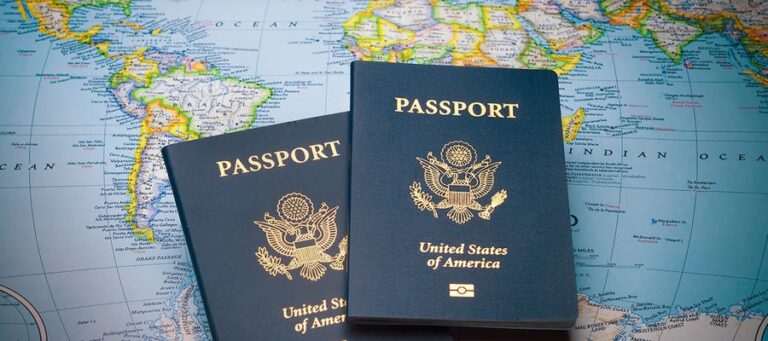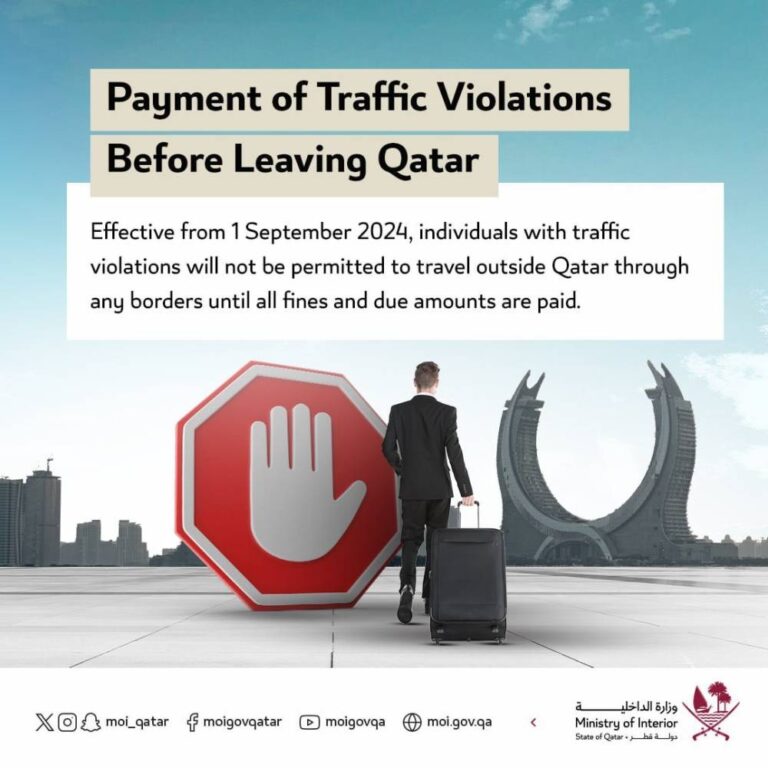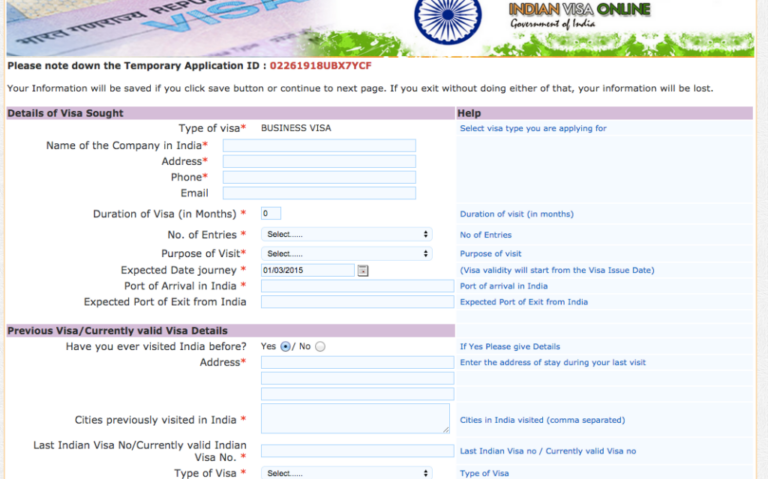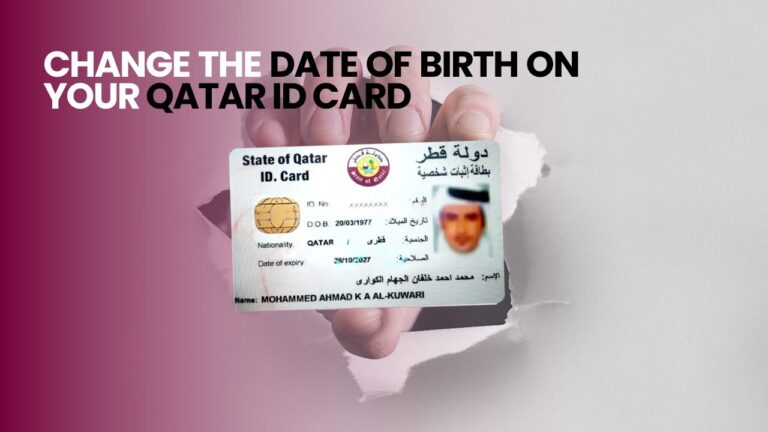Secure Journey: All You Need to Know About Tourist Visa Biometrics
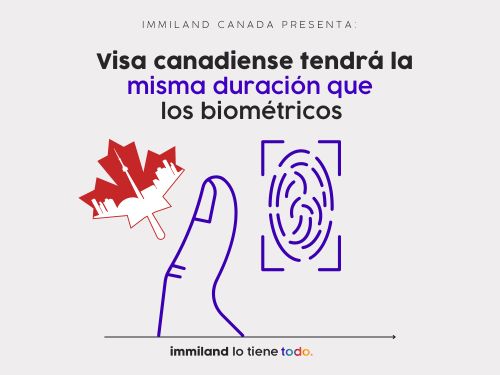
Understanding Biometrics for Visa
Biometrics in Visa Applications
Biometric data is integral to the visa application process, offering enhanced security and efficiency. Biometrics typically include collecting detailed information like fingerprints and photo images. Such data helps in verifying your identity and ensuring that the visa application system can effectively prevent fraud and misuse (Aratek).
If you’re applying for a tourist visa, you might need to provide your biometrics. For instance, individuals between 14 and 79 years old applying for visitor visas, study or work permits, or permanent residence in Canada must submit their biometrics (Source). This includes capturing your fingerprints and taking a photograph.
The table below summarizes biometric inclusion for some popular tourist visas:
| Visa Type | Age Range | Biometric Data Required |
|---|---|---|
| Canada Tourist Visa | 14-79 years | Fingerprints, Photo |
| US Tourist Visa | All applicants | Fingerprints |
| UK Tourist Visa | All applicants | Fingerprints, Photo |
For more information on other tourist visa requirements, check our articles on uk tourist visa and us tourist visa for parents.
Importance of Biometrics
Biometrics play a central role in the evolution of international travel and border management. They help balance the need for stringent security measures with welcoming international visitors. This approach not only improves the integrity of the visa issuance process but also enhances overall traveler safety (Aratek).
In the United States, using biometrics such as fingerprints during visa applications and verification at ports of entry is critical for national security. This helps prevent the use of stolen or counterfeit visas, ensuring safer travel for all.
| Benefit | Explanation |
|---|---|
| Enhanced Security | Prevents visa fraud and misuse |
| Efficiency | Streamlines identity verification processes |
| Safety | Ensures safe entry and departure tracking |
For detailed steps on how to apply for a tourist visa, visit our tourist visa application process page.
The Department of Homeland Security (DHS) emphasizes the significance of biometrics in facilitating legitimate travel. Their system, IDENT, holds around 300 million unique identities and processes over 400,000 biometric transactions daily.
For additional information on biometrics and its impact on travel security, refer to our section on biometrics and international travel.
Biometric Collection Process
Tourist visa biometrics play an essential role in ensuring the security and smooth processing of visa applications. Here’s what you need to know about the collection process.
Who Needs to Give Biometrics
If you’re applying for a tourist visa, you may be required to provide biometrics. Typically, individuals between the ages of 14 and 79 years old need to give their biometrics when applying for a visitor visa, study or work permit, or permanent residence. Exceptions may apply for certain individuals, such as travelers from visa-exempt countries with a valid Electronic Travel Authorization (eTA).
| Age Group | Biometric Requirement |
|---|---|
| 14 – 79 | Required |
| Under 14 | Not Required |
| Over 79 | Not Required |
Where to Provide Biometrics
You will need to go to an authorized location to provide your biometrics. This can often be done at a Government of Canada-authorized Visa Application Centre (VAC). It’s important to make an appointment beforehand to ensure a smooth process. Check specific details for your location on the tourist visa checklist.
Frequency of Biometric Giving
Once you give your biometrics, they are valid for 10 years. During this period, you won’t need to provide your biometrics again unless this period expires. This policy allows for efficient and streamlined application processes for frequent travelers.
| Validity Period | Frequency Requirement |
|---|---|
| 10 Years | Once every 10 years |
For more details on the process, you can refer to the biometric fingerprinting requirements. Ensure you have all necessary documents and meet specific tourist visa photo requirements before your appointment to avoid any delays.
By understanding these aspects of the biometric collection process, you can better prepare for your tourist visa application and ensure a smooth journey.
Biometrics in Canada Visa
Biometric data plays a crucial role in the visa application process for Canada. Understanding the requirements, exceptions, and validity period for biometrics is essential for anyone planning to apply.
Biometric Requirements in Canada
If you are applying for a visitor visa, study permit, work permit, or permanent residence in Canada, and you are between 14 and 79 years old, you will need to provide your biometrics (IRCC). This process began on December 31, 2018, and involves submitting your fingerprints and photo as a part of your application.
| Age Group | Biometric Requirement |
|---|---|
| 14 – 79 | Required |
| Below 14 | Not Required |
| Above 79 | Not Required |
Applicants must adhere to these requirements unless they fall under specific exemptions detailed below.
Exceptions for Biometric Submission
In some instances, you may be exempt from providing biometric data. Exemptions are granted under specific circumstances as outlined by the Government of Canada. Scenarios that might warrant an exemption include:
- Certain diplomatic and official visa applicants
- Applicants under specific programs and agreements
- Individuals who cannot physically provide biometric data due to amputations or religious objections
Biometric Validity Period
The biometric data you provide remains valid for 10 years under the 1 in 10 policy. This means if you have submitted your biometrics once, you do not need to resubmit them for subsequent temporary residence applications within a 10-year period.
| Validity Period | Remarks |
|---|---|
| 10 years | Valid for subsequent temporary residence applications |
| Less than 10 years | Partial enrollment or specific exemptions, new submission may be required |
If you fall into a category where it was not feasible to collect one of the necessary biometric data (e.g., due to amputations), you may not benefit from the 10-year validity and might need to submit biometric data again. Applicants in such scenarios may also be eligible for a fee exemption if they need to provide their biometric data within the next 10 years (Government of Canada).
For comprehensive details about other tourist visa requirements, explore our linked articles. Prepare thoroughly to ensure smooth processing of your tourist visa application for Canada.
Biometrics Practicalities
Understanding the practicalities of the biometrics process is crucial for travelers applying for a tourist visa. This section breaks down the key components, ensuring you navigate the requirements with ease.
Biometrics Process Overview
The biometrics process begins with the submission of your application and the payment of the biometrics fee. Once done, you will receive a Biometric Instruction Letter (BIL), outlining the next steps for providing your biometric data. Applicants can provide their biometrics at various locations:
- Service Canada locations
- Global Affairs Canada
- Any Visa Application Center (VAC)
- U.S. Application Support Center (ASC)
Refer to the Government of Canada for detailed information on locations.
Partial Biometric Enrollment
In situations where you are unable to provide one or both biometric identifiers, such as fingerprints or photographs, the applicant may be eligible for partial enrollment. Circumstances like amputations or religious objections may exempt you from providing full biometrics. The process involves:
- Self-identification: Contacting IRCC to inform them of your exemption status.
- Receiving a Partial BIL: A document indicating which biometric requirement is exempted.
- Temporary Residence Applicants: You can reuse your biometrics for subsequent applications under the 1 in 10 policy, making them valid for 10 years unless otherwise noted.
For more information, visit the section on tourist visa fingerprinting.
Fee Exemption Criteria
When paying the biometrics fee, certain fee exemptions may apply if partial biometrics are provided. Criteria include:
- Completing a Partial Enrollment: Those who cannot benefit from the 1 in 10 policy may be eligible for a fee exemption if they complete a full or another partial enrollment within 10 years.
- Specific Circumstances: Exemptions are sometimes granted based on regulations when criteria are met, such as religious exemptions. Check the tourist visa application process for details.
| Criteria | Eligible for Fee Exemption |
|---|---|
| Completed Partial Enrollment | Yes |
| Unable to Benefit from 1 in 10 Policy | Yes |
| Regulatory Circumstances | Yes |
Understanding these practicalities will help you confidently navigate the tourist visa application process and ensure a smoother journey. Explore more about tourist visa requirements and find tailored guidance to complete your biometrics.
Biometrics and International Travel
Biometrics Impact on Security
Biometrics play a crucial role in enhancing the security of the visa application process. By using unique physical traits such as facial images, fingerprints, and iris patterns, biometric data provides a reliable method of accurately identifying visa applicants. This helps in preventing fraud and ensuring that the individual entering the country is who they claim to be.
Biometrics also improve border security by providing a robust system for verifying the identity of travelers. The Department of Homeland Security (DHS) manages a system that collects the biometric data of most entrants into the U.S., aiding in the identification and monitoring of individuals entering the country.
Biometrics and Departure Tracking
Tracking the departure of non-citizens from the U.S. using biometrics has proven to be a complex challenge. In September 2020, only 13% of non-citizens departing the U.S. had their biometrics matched by U.S. Customs and Border Protection (CBP) across all exits in fiscal year 2020. This indicates significant gaps in the biometric tracking system for departures.
One of the primary issues is the inability to systematically track exits, which has resulted in visa overstays accounting for 62% of the newly undocumented population, according to a report by the Center for Migration Studies. While CBP has made progress with programs like Simplified Arrival, which uses facial recognition technology to match passengers’ photos with their biographic information, a fully integrated biometric entry-exit system is still not in place.
Implementation Challenges
Implementing a comprehensive biometric entry-exit system faces several hurdles. These include inadequate infrastructure, logistical roadblocks, technical difficulties, interoperability issues, and funding shortages. The cost of implementing such a system is estimated at approximately $530 million from fiscal year 2022 through 2027, excluding costs for all entry and exit sites.
Challenges also arise from the need to ensure that the system is interoperable with existing databases and technologies. This requires significant investment and coordination between various government agencies. Additionally, technical difficulties in capturing and matching biometric data accurately can hinder the system’s effectiveness.
For more information on the impact of biometrics on security and visa processes, you can explore our sections on tourist visa requirements and tourist visa fingerprinting.
It’s essential to stay informed about these advancements and challenges to ensure a secure and smooth visa application process. If you are preparing for an international trip, make sure to review our tourist visa application form and understand the documents needed for a visa interview.
Biometrics in U.S. Visa
To ensure a secure and efficient visa application process, the U.S. requires specific biometric data from individuals seeking entry. This section explores U.S. biometric requirements and screening procedures for tourist visas.
U.S. Biometric Requirements
For tourist visa applicants, the U.S. standard for biometric screening involves collecting ten fingerprint scans at all U.S. Embassies and Consulates. Refusal to provide fingerprints will result in your visa application being deemed incomplete and not considered until you agree to provide the necessary biometric data (Travel.State.Gov).
| Biometric Data | Description |
|---|---|
| Fingerprint Scans | 10 prints collected |
| Facial Recognition | Occasionally used |
Biometric Screening Procedures
The screening process begins with the collection of your fingerprints. The data from these fingerprint scans is stored in a database accessible at U.S. ports of entry by Department of Homeland Security immigration inspectors (Travel.State.Gov). This step is crucial for national security, helping prevent the use of stolen or counterfeit visas. It also enhances safety for all travelers entering the U.S. by ensuring that legitimate visitors are properly verified.
The Department of Homeland Security (DHS) utilizes biometrics not only to verify visa applications but also to detect illegal entry, grant immigration benefits, and enforce federal laws. The DHS system, known as IDENT, holds approximately 300 million unique identities and processes over 400,000 biometric transactions daily.
For more information regarding tourist visa requirements and related procedures, consider exploring articles such as U.S. tourist visa requirements and U.S. embassy tourist visa.
| Screening Step | Description |
|---|---|
| Fingerprint Collection | Collected at embassies, consulates, and ports of entry |
| Data Storage | Stored in DHS database (IDENT) |
| Verification | Ensures legitimate travel and prevents fraudulent activities |
Biometrics Technology Advancements
Use of Facial Recognition
Facial recognition technology plays an essential role in the realm of biometrics for visas. This technology improves security measures by accurately identifying visa applicants through unique physical traits such as facial images. When you apply for a tourist visa, your facial biometric data is collected and stored in secure databases. This data helps in verifying your identity at different stages of your journey, including at ports of entry.
The advantage of facial recognition lies in its ability to analyze various facial features such as the distance between your eyes, the shape of your cheekbones, and the contour of your lips. This data is then used to create a unique digital template that can be matched against stored records to confirm your identity.
Role of Biometrics in Border Security
Biometric technology is integral to enhancing border security. When you undergo the visa application process, biometric data like fingerprints and facial images are collected. These data points are used by agencies like the Department of Homeland Security (DHS) to authenticate visa applicants and identify any potential security risks Department of Homeland Security.
For instance, the U.S. Department of Homeland Security utilizes a system known as IDENT, which holds approximately 300 million unique identities and processes over 400,000 biometric transactions every day. This system helps in not only verifying visa applications but also in detecting illegal entry and granting immigration benefits.
| Metric | Value |
|---|---|
| Unique Identities in IDENT System | 300 million |
| Daily Biometric Transactions | 400,000 |
Biometrics also play a crucial role at U.S. ports of entry. The data from the ten fingerprints collected during the visa application process is stored in a database accessible to DHS immigration inspectors. This enhances the safety of legitimate travelers entering the United States (Travel.State.Gov).
Biometrics Applications in Law Enforcement
The use of biometrics extends far beyond visa applications and border security, finding significant applications in law enforcement as well. When you submit biometric data such as fingerprints and facial images, it can be utilized for enforcing federal laws and detecting illegal activities. This is particularly relevant for ensuring that individuals who pose security risks are identified and apprehended at the earliest stages.
Biometric systems like IDENT provide law enforcement agencies with the tools to identify individuals rapidly and accurately. The Enhanced Border Security and Visa Entry Reform Act of 2002 mandated the use of biometrics in U.S. visas, requiring U.S. Embassies and Consulates to issue only machine-readable, tamper-resistant visas with biometric identifiers (Travel.State.Gov). This mandate underscores the importance of biometrics in maintaining national security.
For those concerned about the practicalities, the Department of Homeland Security continues to strive to establish systems for collecting biometric data of most entrants. However, challenges remain, particularly in tracking exits of non-immigrant visitors.
As biometrics technology advances, these systems are becoming more sophisticated and integral to various aspects of international travel and law enforcement. Always stay informed on the evolving requirements for your tourist visa application and ensure you meet all tourist visa requirements before planning your secure journey.
Future of Biometrics
Privacy Concerns
Privacy concerns are a significant aspect to consider when discussing the future of biometric tracking systems for tourist visa biometrics. The use of biometric data, such as facial recognition and fingerprints, raises questions about data security and the potential for misuse. Critics argue that the benefits of biometric tracking may be overstated, especially when biographic data collection has been effective (National Immigration Forum). There’s an ongoing debate surrounding the balance between enhanced security and individual privacy rights.
| Aspect | Concern Level |
|---|---|
| Data Security Risks | High |
| Misuse of Data | Moderate |
| Overestimation of Benefits | Moderate |
Operational Efficiency
Implementing a biometric system can significantly improve operational efficiency at ports of entry and through the tourist visa application process. Technologies like facial recognition can speed up identification and streamline procedures. For example, in the CBP’s Simplified Arrival pilot program, facial recognition technology is used to bring up passengers’ biographic information efficiently (National Immigration Forum). However, there are also logistical and technical challenges that can hinder the successful implementation of such systems.
| Implementation Challenges | Impact |
|---|---|
| Inadequate Infrastructure | High |
| Logistical Roadblocks | High |
| Technical Difficulties | Moderate |
| Interoperability Issues | Moderate |
| Funding Shortages | High ($530 million estimated cost from FY 2022 through FY 2027) |
Validity of Biometric Tracking
The validity of biometric tracking systems in improving border security continues to be debated. Although advancements in technology, such as facial recognition, have shown promising results in identifying travelers, a comprehensive biometric entry-exit system is still in the works (National Immigration Forum). It’s essential to weigh the benefits against the investment and operational hurdles. Visa overstayers account for a significant portion of the newly undocumented population, yet the system to track exits remains incomplete.
For more insights on the tourist visa validity period and other related concerns, it is crucial to stay informed about ongoing developments and future trends in biometric technology. The continuous advancements in biometrics technology promise to enhance security and efficiency, but privacy and implementation challenges need to be addressed comprehensively.

